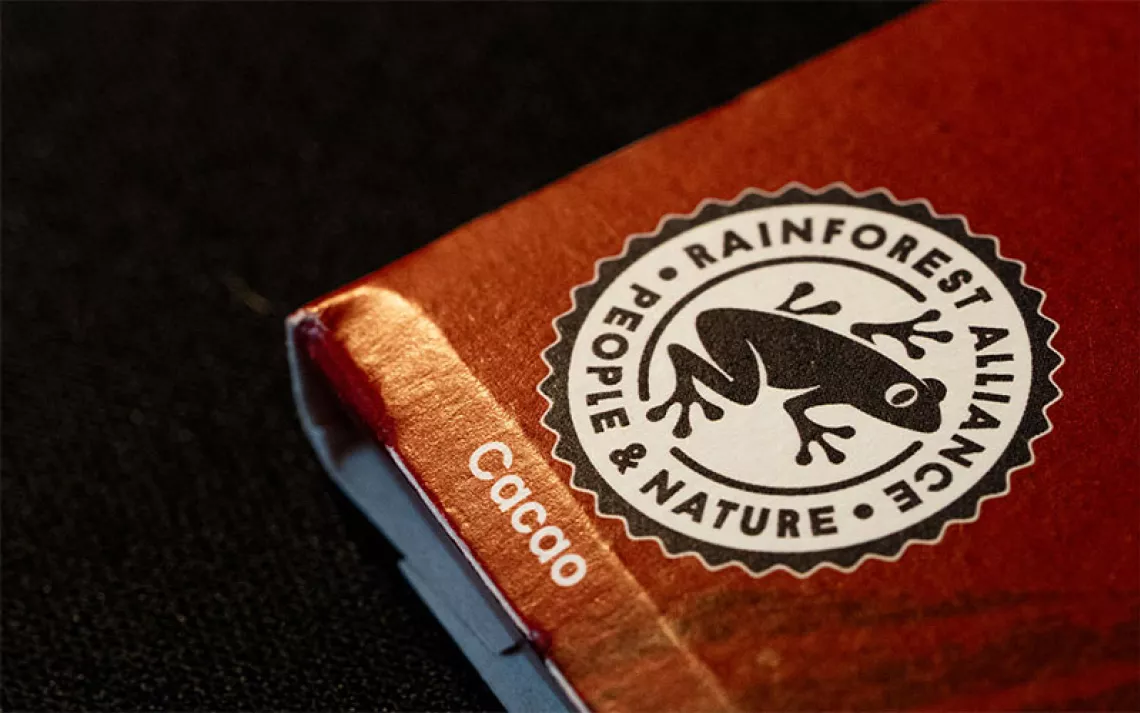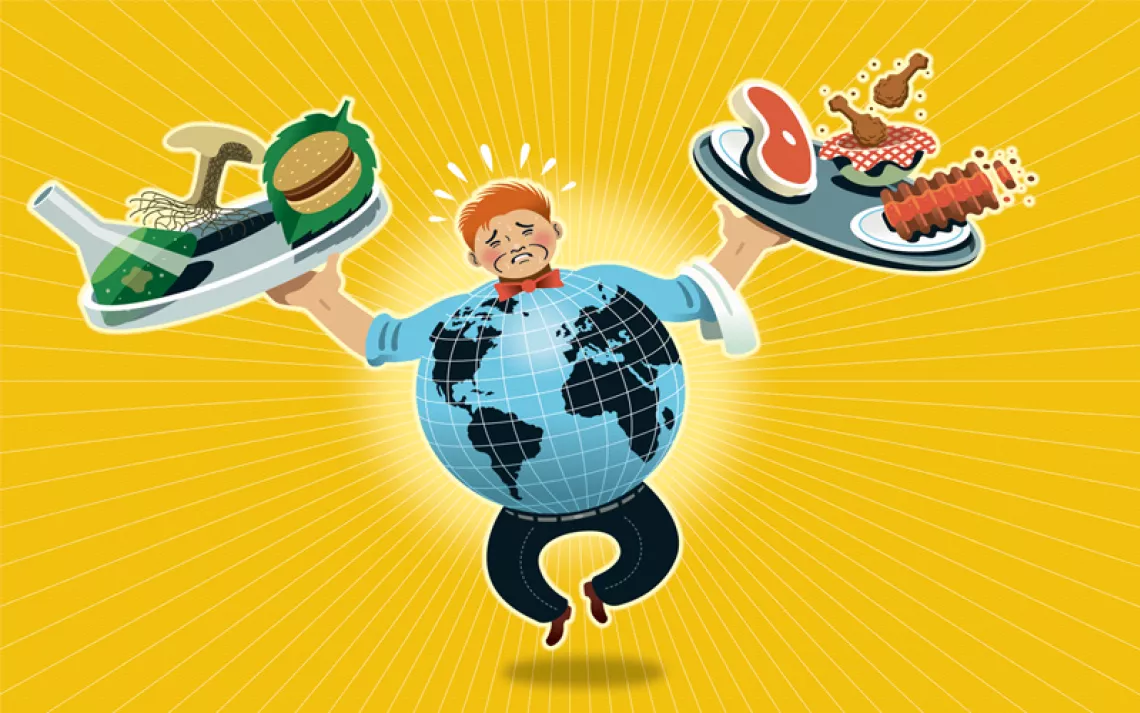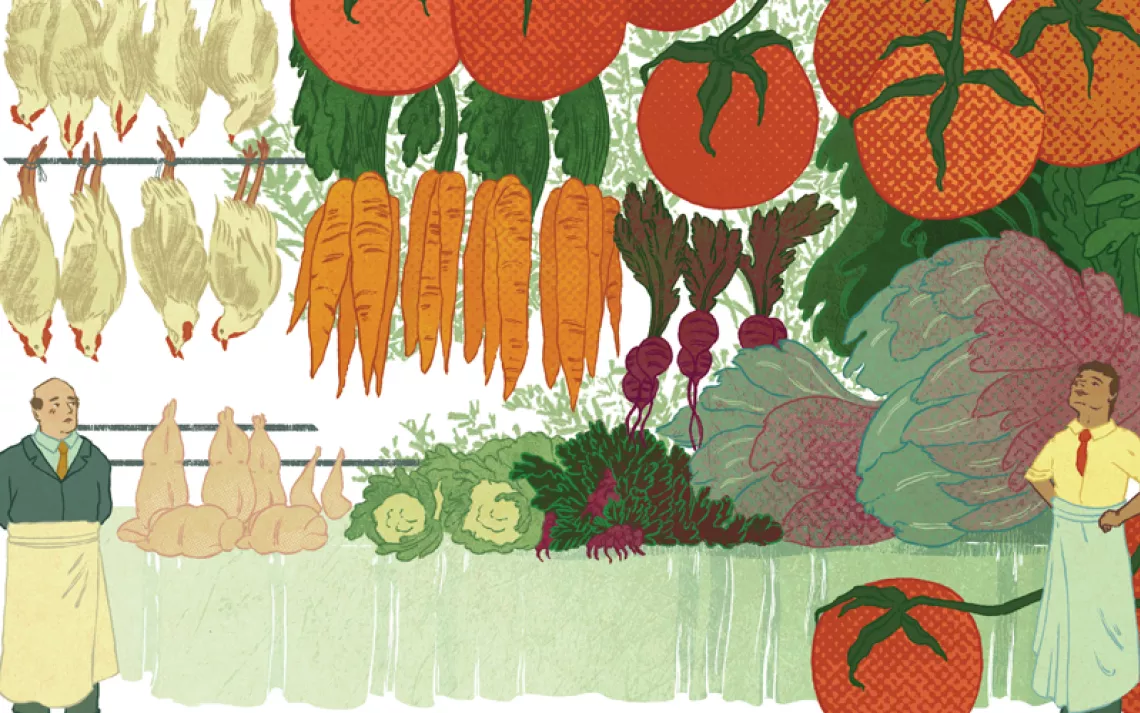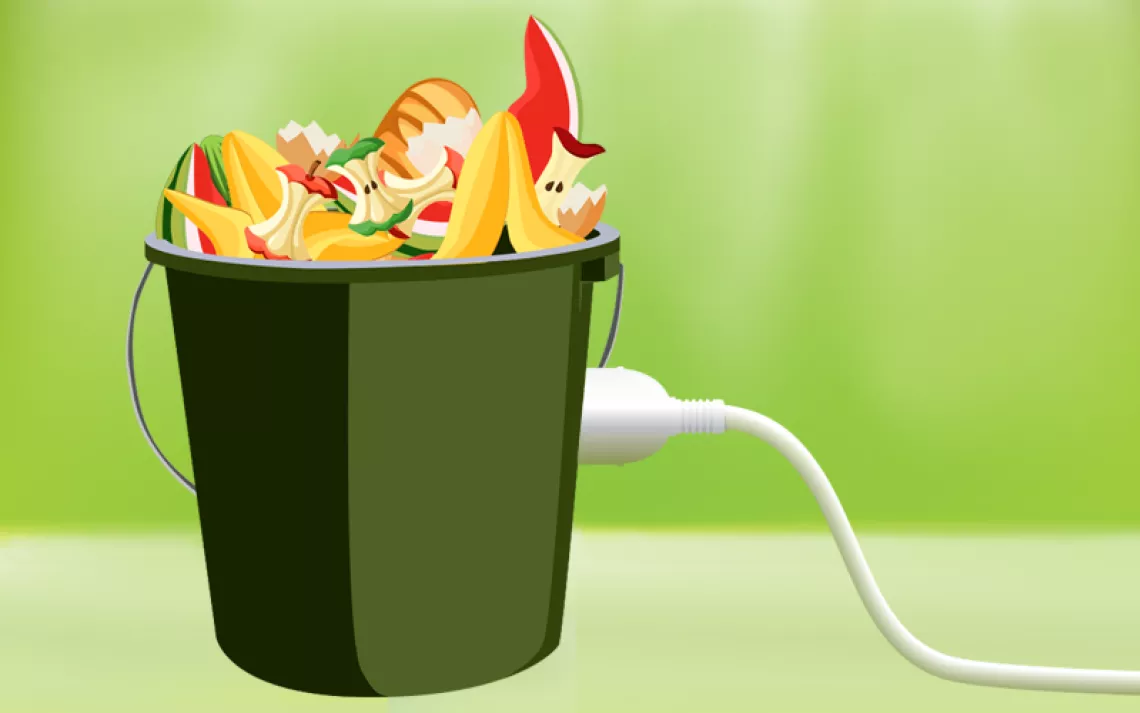4 Ways Ugly Has Become Trendy
Reshaping our views of the misshapen
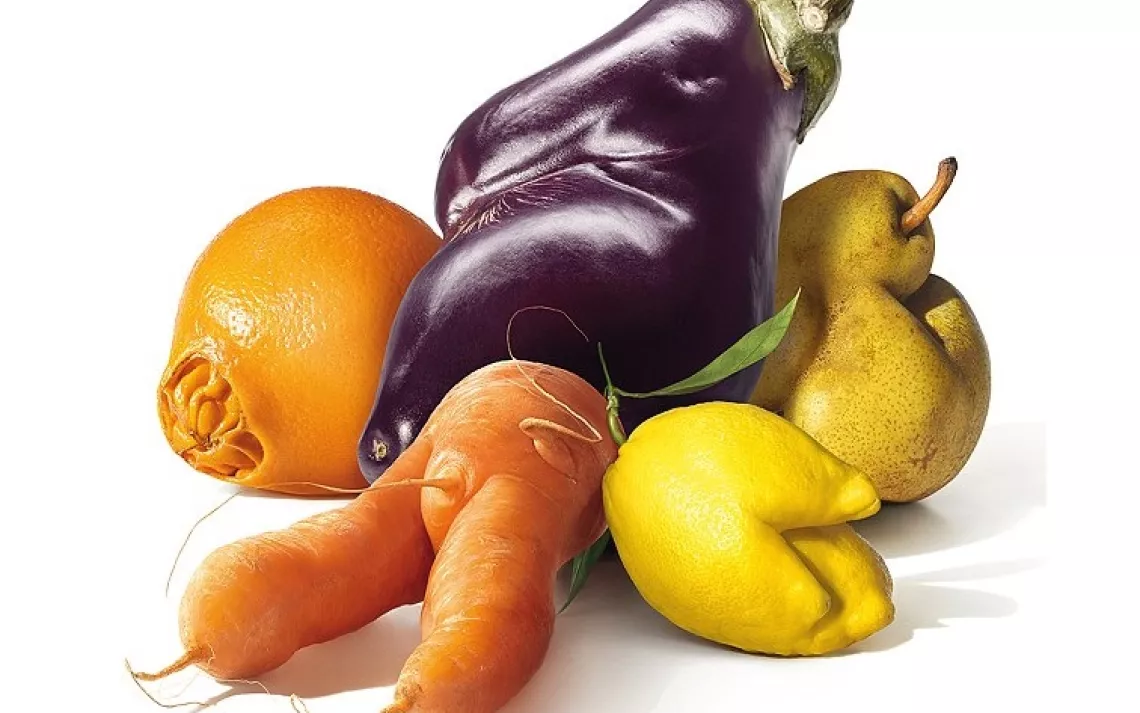
Optically deficient, aesthetically challenged, Frankenstein-esque, and just plain ugly—these are the types of produce consumers typically avoid when grocery shopping, if said produce even makes it to the shelf. Feel sorry for the ugly fruits and veggies? Don’t. Consumers are finally starting to look at what’s on the inside: the same deliciousness found in the picture-perfect produce, and sometimes for cheaper.
It’s about time. The USDA revealed that 31 percent of the available food supply at the consumer level goes uneaten. Even worse, 44 percent of food waste is simply tossed. Ugly produce comprises a large part of this food waste, as confirmed by Doug Rauch, the former president of the Trader Joe’s Company. Nutritious food is cast aside while 48 million Americans are food insecure.
Over the years, consumers' consistent preference for immaculate produce has cultivated the industry's strict cosmetic standards. "Taste," surprisingly, is not a criterion in this competition. From apples to yams, the scrutiny is tougher than that of a New York modelling agency.
Growers often over-produce to ensure they meet volume specifications of an order. Produce deemed defective (read: ugly) typically becomes animal feed, or may even be left to rot. Not for much longer—finally, it’s ugly’s time to shine. For years ugly produce has made way for the prettier stuff, but attitudes are changing globally. Here are four ways ugly is being redefined, big time:
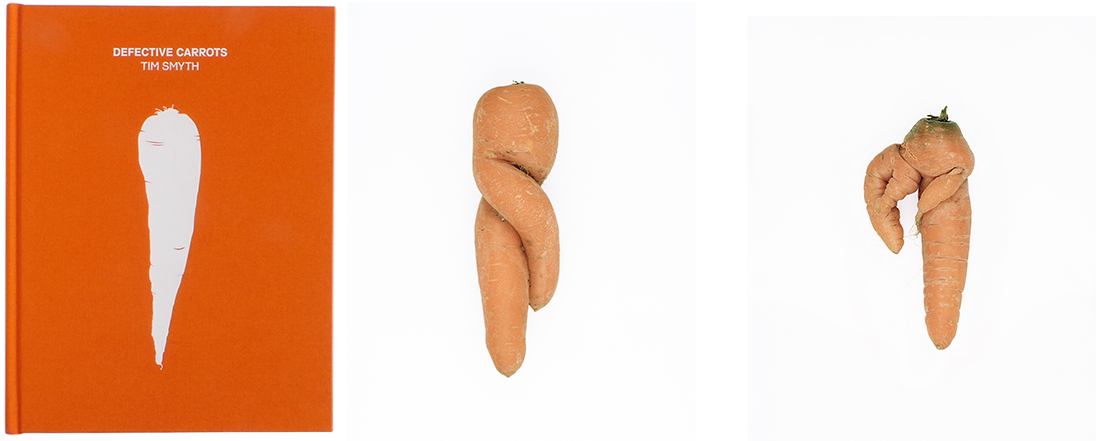
Photos by Tim Smyth, published by Bemojake.
1.) UGLY ART IS BEAUTIFUL
It’s widely accepted that art fosters new forms of knowledge and consciousness, and can ultimately inspire social change—why should raising food waste awareness be excluded? Tim Smyth’s book, Defective Carrots (Bemojake, 2013) contains more than 50 photos of “optically deficient” carrots. Smyth employs the cosmetic criteria of an actual high-speed optical sorting machine to collect defective carrots for his book. While there are many grotesquely deformed carrots, many look completely normal, which raises questions about “carrot perfectionism” in our industrialized agricultural system.
In a recent interview, Smyth discussed the environmental impact of over-production and the unnecessary fate of most carrots as animal feed or salad shreds. He also pointed out the detachment of humans from the agricultural system, as machines are used to determine what’s edible. Ultimately, Defective Carrots exposes the agricultural system’s strict grading criteria as superficial and attempts to show readers that “different" can be beautiful too.
2.) UGLY LABELS ARE SMART
Offering fresh and nutritious produce deemed visually unfit at a discount makes financial sense. It also makes social sense. It even makes environmental sense. French supermarket chain, Intermarché, realized the potential for these benefits and launched Inglorious Fruits and Vegetables, a label that offers ugly produce at a 30 percent discount. Within 2 days, stores sold an average of 1.2 tons of imperfect produce each and saw a 24 percent increase in traffic. The label is described as “win-win-win,” because potentially food insecure consumers get the same produce for cheaper, growers get paid for what would have been thrown away, and the store generates additional revenue from a new line of products.
Intermarché isn’t the only retailer reaping the benefits of ugly produce. Austrian supermarket chain Billa launched its own label, Wunderlinge, which offers ugly apples, potatoes and carrots at a discount. The UK hopped on the ugly bandwagon a while ago: supermarkets chains Tesco and Waitrose both offer ugly produce for cheaper. The success of discounted ugly produce labels abroad has put the pressure on retailers in the United States, namely Whole Foods, to do the same. U-G-L-Y they ain’t got no alibi…
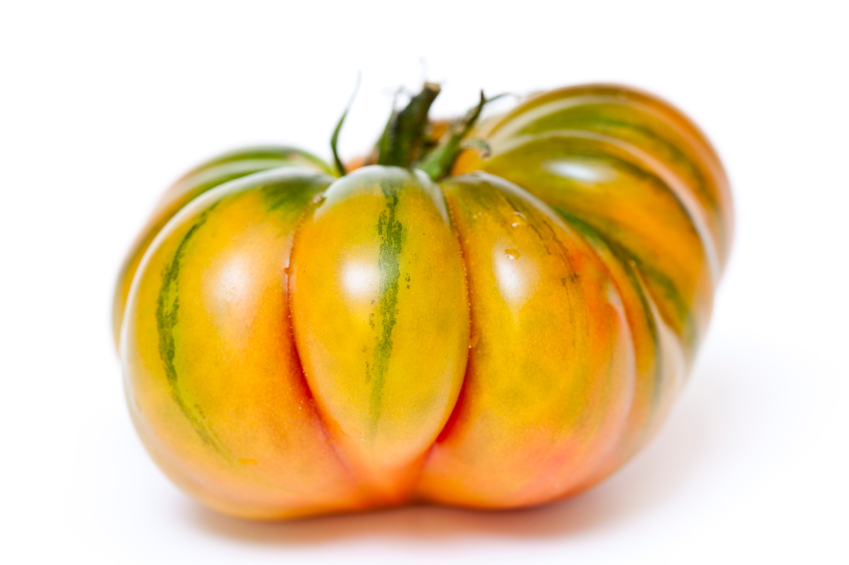
3.) UGLY GOURMET IS DELICIOUS
Interest in the often grotesquely gnarled heirloom tomato has increased substantially over the past few years. Why? They’ve got a lot more flavor than the “tasteless” modern tomato that’s emerged from industrialized agriculture. Heirloom tomatoes have a rich and complex flavor, but they are also highly unpredictable to grow. It is, perhaps, the combination of these qualities that make them so appealing.
Paul Underhill, partner and farmer at Terra Firma Farm in Winters, California, calls heirloom tomatoes both a “tomato-lover’s dream,” and a “farmer’s nightmare.” Underhill backs up the claim with his own experience: “We have spent almost twenty years growing [heirloom tomatoes], and yet each year is like spinning a giant roulette wheel.” He goes on to explain how labor-intensive and sensitive they are; adding that all the extra attention that goes into them pushes up the price.
The heirloom tomato is a hero among ugly produce: it proves that taste matters above all and that beauty is in the eye of the beholder. Besides, how do mass-produced tomatoes stand a chance against heirloom varieties with names like Marvel Stripe, Green Zebra, Super Snow White, and Hillibilly?
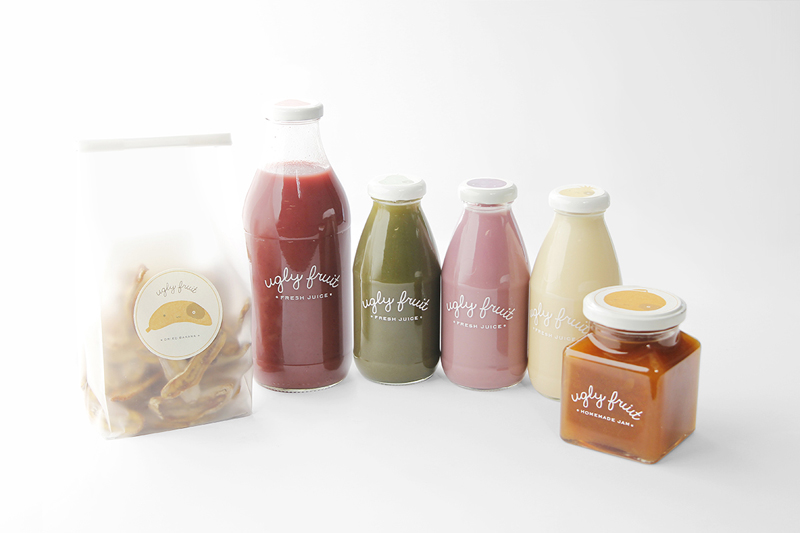
Photo by Mirim Seo.
4.) UGLY BRANDS ARE COOL
There is an increasing demand for honest companies that affect positive social change as opposed to companies that create social costs. Enter Ugly Fruit: designer Mirim Seo thought up the brand with the intention of minimizing food waste in her community. Though it’s still in the idea phase, Ugly Fruit would sell homemade juice, jams, and dried fruits from ugly produce donated by neighborhood grocery stores like Whole Foods, Trader Joe’s, and Walmart.
It’s a cool idea with an even cooler look. Seo’s design and use of “cute fruit personas” was praised by The Dieline as being “amusing and sustainable,” while TrendHunter claimed Ugly Fruit’s “beautiful packaging” made “the color of old fruit look new.” This was Seo’s plan all along: take perfectly edible produce that’s bruised, discolored, or distorted, and repackage it adorably. It’s like re-gifting something with better wrapping paper.
Though Ugly Fruit hasn’t launched yet, the photos sure do look promising.
Follow Sierra on Facebook, Twitter, Pinterest, Instagram, and YouTube.
 The Magazine of The Sierra Club
The Magazine of The Sierra Club
